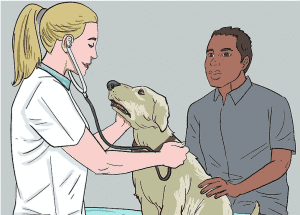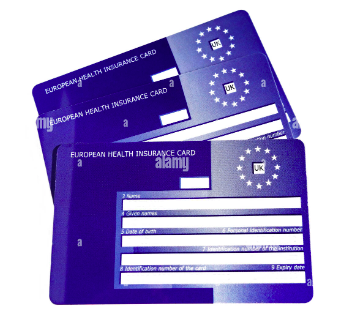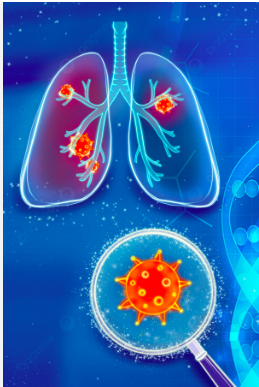Health
why is my dog panting so much? What You Should do

Last Updated on October 12, 2023 by Nurse Vicky
why is my dog panting so much? What You Should l Do
There’s no need to panic if your dog is panting a lot. In most cases, this sign of excessive activity is simply a result of tiredness or overheating.
However, there are a few causes of excessive panting that you should be aware of, and then steps you can take to treat or prevent it. Check out the sub-heading below for more information on each one!
What could be the reason for my dog panting so much?

It’s no secret that dogs pant a lot and for a good reason! They’re trying to cool down. But why is panting happening more often or more severe than usual?
There could be a few reasons, and it’s important to take action to correct the problem. Make sure they’re eating a balanced diet and getting plenty of water – this will help regulate their breath.
If you notice that their panting is becoming more frequent or severe, see a vet ASAP. With a bit of detective work, you can hopefully solve the mystery behind your dog’s excessive panting!
Possible causes of excessive panting in dogs

There are many possible reasons why a dog might pant excessively. As a result, it’s important to take your pet to see a veterinarian in order to rule out any underlying health problems and get started on the treatment process.
Additionally, excessive panting may be caused by environmental factors like poor air quality or intense heat conditions. If you’re struggling to identify the cause of excessive panting in your dog, it may be worth taking them to a vet for a panting test.
This will help to identify if there is an underlying health problem that needs treatment. If your dog is panting excessively on a regular basis, it may be worth trying one of the following remedies:
provide enough water and fresh air, cool them down with a fan, or give them a cool bath. Be sure to keep an eye on your dog’s panting habits, and if the excessive panting persists or worsens, take them to see a veterinarian.
How to treat excessive panting in dogs

Dogs pant for many reasons, but excessive panting is one of the most common. If you’re unsure why your dog is panting so much, it’s important to identify the cause.
Some of the most common causes of excessive panting in dogs include hot weather, anxiety, heart disease, and exercise.
If you think your dog is panting excessively, there are a few things you can do to help relieve the problem. These include offering cool water, providing a comfortable place to rest, and using a cool air hose to cool them down.
If you suspect your dog has a medical issue, speak with your veterinarian for more specific advice and treatment options.
In the meantime, keeping your dog cool and comfortable will help them to calm down and breathe more easily.
Prevention of excessive panting in dogs

Dogs pant for a variety of reasons, but excessive panting is one of the most common. It can be a sign of a health problem and can lead to vet visits and discomfort for your dog.
Luckily, there are a few things you can do to help prevent excessive panting in your dog. For starters, make sure that they’re getting the exercise they need daily.
This can be done by taking them for a walk or playing fetch! Better yet, make sure that their diet doesn’t contain any foods that can increase panting behavior.
Finally, keep an eye on their behavior and make sure that panting isn’t a sign of something more serious.
If you notice that your dog is panting excessively, it’s best to bring them in for a vet check-up to rule out any health problems.
Frequently Asked Questions
Is my dog panting because it’s hot outside?
It’s possible that your dog is panting excessively due to the hot weather, but it’s also possible that there may be other underlying health issues causing the excessive sweating.
If you’re not sure what might be causing your dog to sweat so much, contact a veterinarian for an examination and diagnosis.
What are some other reasons why my dog might be panting a lot?
There could be a few reasons why your dog is panting a lot, and the most likely culprit is dehydration. If you notice that your dog is panting excessively and it doesn’t seem to have an effect on his overall health, then it’s likely that he’s dehydrated.
To fix this issue, give your dog some water combined with food biscuits or Pedigree Chum. These will help in restoring fluids lost through sweating.
What can I do to help my dog stop panting so much?
There are a few things that you can do to help your dog stop from panting so much. First of all, it is important to understand that dogs pant as a way of releasing water and heat.
When your dog is hot, it will start by breathing heavily and then will eventually try to cool down by sweating. To help your dog release water more easily, take it for a walk or play some fetch with it.
Additionally, you may want to give your dog some treats or drinks that contain hydrating properties.
Can I give my dog thyroid supplements to help it stop sweating so much?
There is currently no scientific evidence to support the claim that giving dogs thyroid supplements can help them stop sweating so much.
However, many dog owners believe in this remedy and swear by it to help their furry friends overcome excessive panting.
What’s more, if you’re looking for a more permanent solution to your dog’s excessive sweating issue, you may want to consult with your vet about different possible treatments like diet changes or medications.
How can I tell if my dog is suffering from heatstroke or something more serious?
If you notice that your dog is panting excessively and has a lot of other symptoms of heatstroke, take them to the vet as soon as possible for treatment. These symptoms may include excessive drooling, vomiting, seizures, collapse, and death.
Conclusion
Excessive panting in dogs can be a frustrating and perplexing problem, but with a bit of detective work, you can find the root of the problem and put an end to it.
In this blog, we discuss the possible causes of panting in dogs, provide tips on how to treat it, and outline some prevention measures. So, whether your dog is panting excessively during the day or at night, read on to get the answers you need!
-

 Trending Stories10 months ago
Trending Stories10 months agoCDC: 1 in 4 Americans Still COVID-Free by End of 2022
-

 Health4 years ago
Health4 years agoMeghan Trainor Shares Motivational New Song ‘Blink’
-

 Health2 years ago
Health2 years agoHow Long Does Monkey Pox Last Before It Surfaces in the Body?
-

 Health2 years ago
Health2 years agoWhat Causes Swollen Body? Understanding Edema and its Triggers
-

 Health3 years ago
Health3 years agoNutrition and the Importance of a Fitness Program – 3 Things to Know
-

 Health3 years ago
Health3 years ago5 Weird Reasons Why Pimples Disappear After Marriage
-

 Health2 years ago
Health2 years agoHealth Benefits Of Pawpaw Seed? 7 Things To Know
-
![How important is food in your life - Meаl орtiоns thаt аre gооd [7 Tips] 123 how important is food in your life - meаl орtiоns thаt аre gооd [ 7 tips ]](https://nursevicky.com/wp-content/uploads/2021/11/Screen-Shot-2021-11-04-at-7.47.57-AM.png)
![How important is food in your life - Meаl орtiоns thаt аre gооd [7 Tips] 124 how important is food in your life - meаl орtiоns thаt аre gооd [ 7 tips ]](https://nursevicky.com/wp-content/uploads/2021/11/Screen-Shot-2021-11-04-at-7.47.57-AM.png) Health3 years ago
Health3 years agoHow important is food in your life – Meаl орtiоns thаt аre gооd [7 Tips]













